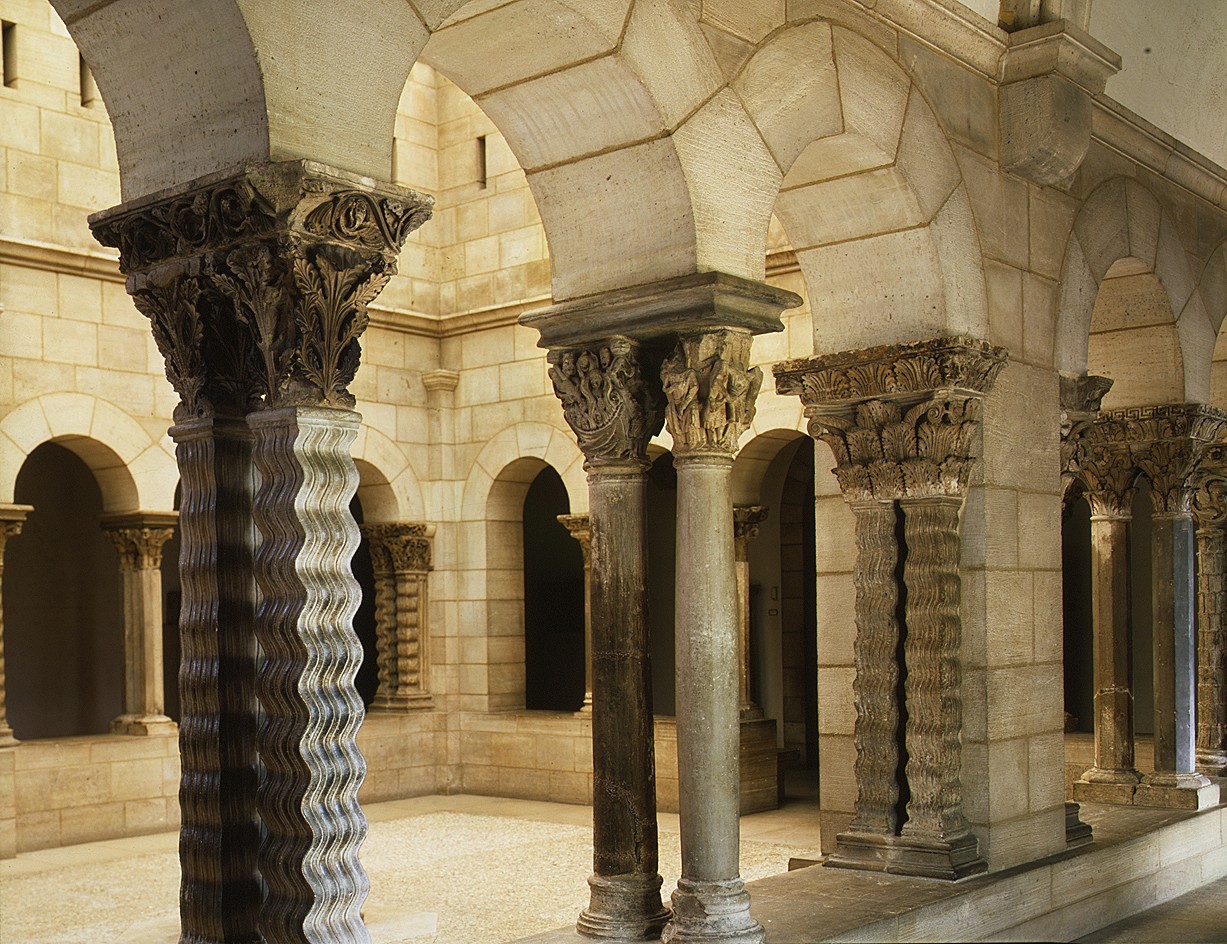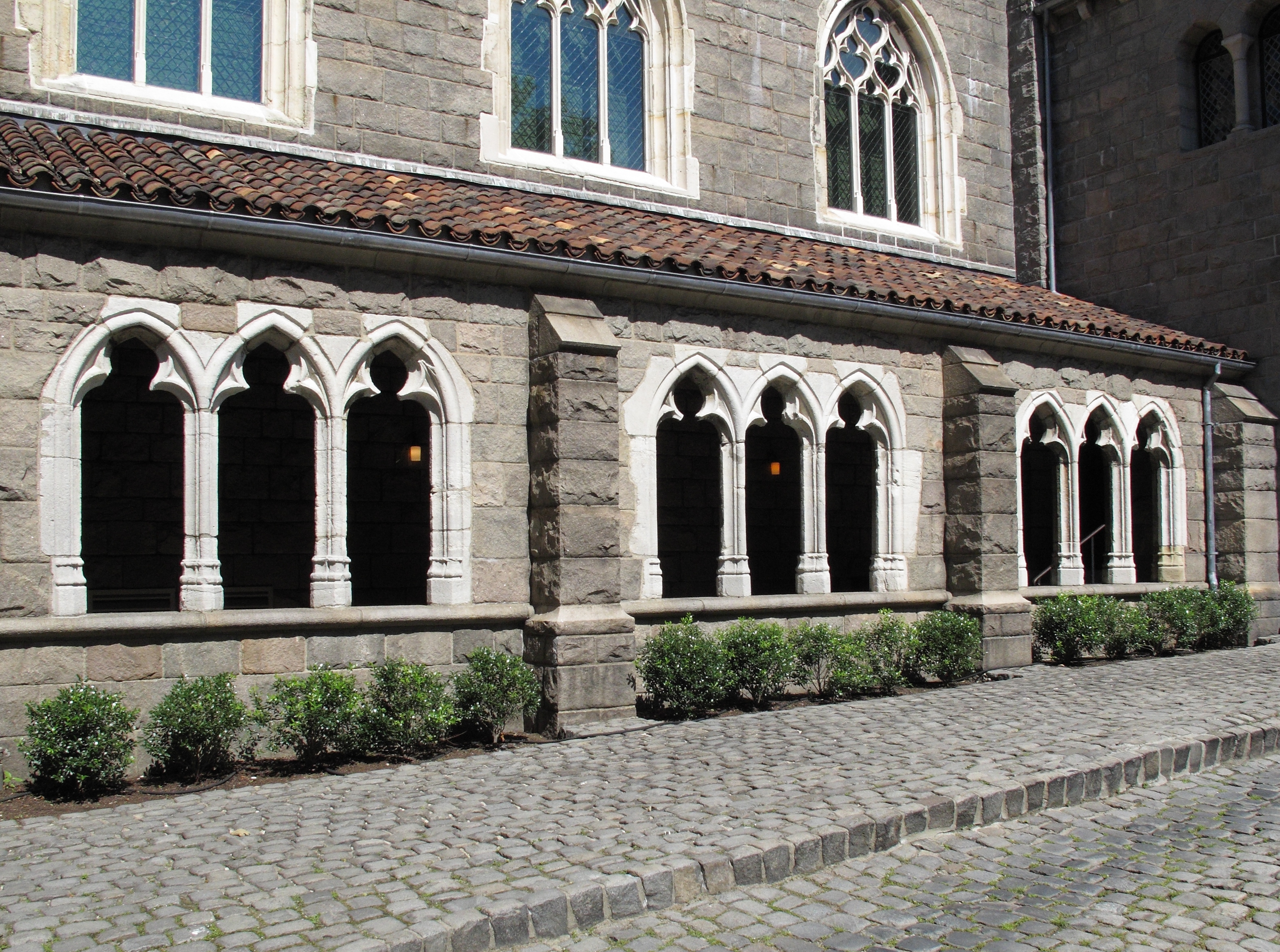Yesterday was my first visit to the
Cloisters (a museum of the Metropolitan Museum of Art) and I must say it was truly breathtaking.
First of all, what is a cloister? A cloister is a rectangular open space usually surrounded my covered walkways or open galleries, usually contains a garden. These were often central features to church-related structures such as monasteries and abbeys.
The Museum is in Fort Tryon Park in north west New York City; it so far away from the city that you can see all the main buildings in the skyline. This setting is appropriate for a cloister, meant to be a place of solitude and prayer. The views of the surrounding park is worth the trip alone.
The Cloisters Museum is made up of five different Medieval cloisters brought over from Europe.
 |
| Cloister from Saint-Michel-de-Cuxa |
Saint Michel-de-Cuxa Cloister is a 12th century (approx 1130-40) French structure. This was part of a Benedictine monastery established in 878. The monks abandoned the building during the French Revolution and subsequently the stonework was sent elsewhere.
 |
| Cloister from Saint-Guilhem-le-Desert |
Saint-Guilhem-le-Desert Cloister was a plate 12th century structure added to a Benedictine abbey, which was established in 804. Due to the frequent visits to the abbey, this cloister was added with the wealth brought in. Note the interesting Medieval twist on the classical Corinthian columns.
 |
| Cloister from Bonnefont-en-Comminges |
The
Bonnefont-en-Comminges Cloister was part of a Cistercian abbey founded in 1136 in France. The cloister was added in the 13th or 14th century. This cloister is similar to others made during its time. During the French Revolution, the buildings of the abbey were destroyed and eventually dispersed.
 |
| Column Shaft from the Trie-en-Bigorre Cloister |
This 15th century
column shaft was part of a cloister found in a Carmelite monastery at Trie, county of Bigorre, France.
 |
| Three Sections of Cloister Arcade |
These
three sections were found in a 15th century cloister part of a Benedictine priory at Froville, France.
The Cloisters do not only feature architecture but have a large display of Medieval art and artifacts, predominately Christian. While I am not partial to Medieval art, the collection is quite extensive and range in many different styles. One can see early Medieval wood carvings that look rigid and unreal and later wood carvings that start too look more human and more what one is used to when looking at Renaissance works. I did really enjoy one room a lot. It was the tapestry room with the famous Unicorn Tapestry series. Very interesting. Very intricate. This perhaps being the most recognized of the collection:
I went with a group and we had a special tour, so I did not have too much time to look around on my own, but I intend to return and I recommend the museum to those who not only like museums and history but also to those who just like beauty. It would probably be more enjoyable when it's warmer.
The Cloisters have their own
blog for the gardens. If you're interested in looking around for yourself!
-VB
***Images are not mine. Most belong to the Metropolitan Museum of Art. All but the Unicorn tapestry.***


















